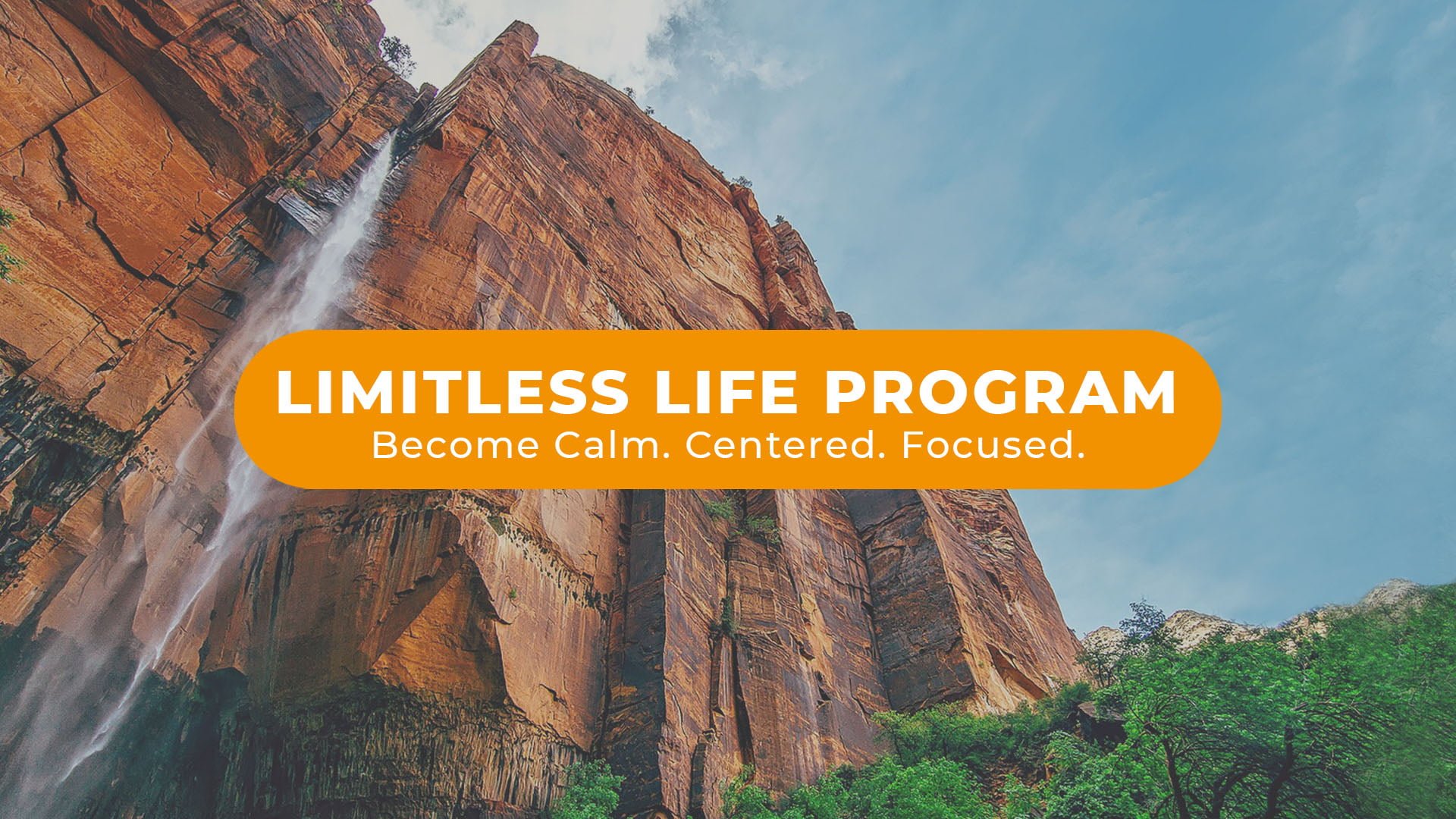Affiliate disclosure: Some of the links below are affiliate links, meaning, at no additional cost to you, I will earn a commission if you click through and make a purchase. As an Amazon Associate I earn from qualifying purchases.
10 Actionable tricks to help you stop falling asleep during meditation
Do you find yourself keep falling asleep during your meditation practice? Many people do. Well, I do.
Drowsiness, especially during sitting meditation posture, is a pretty common thing.
How about falling asleep during meditation? I’ve seen a lot everywhere, even in meditation retreats.
One key aspect of meditation is maintaining the balance between relaxation on the one hand and alertness on the other hand.
It’s a slippery slope. Too tense, you’ll get tired real quick. Too relaxed, and sleepiness is just around the corner. Either way will likely lead to you falling asleep during meditation.
Applying the right amount of effort to maintain this balance requires practice and, yes, actionable tricks.
A medical condition can also cause falling asleep during meditation. In that case, the best advice would be to see your doctor because no meditation techniques or tips will help you much.
Now, assuming it’s not a medical condition, these actionable tricks can effectively help you stop falling asleep during meditation.
Table of Contents
1. Make sure you have enough good quality sleep
As obvious as it sounds, this is the one often overlooked.
I mean, we go to bed every night and wake up in the morning at about the same time, right? But, do we have enough good quality sleep?
If not, you can easily recognize it by the drowsiness felt during the day.
That’s how our body is telling us that it demands much-needed rest.
Trying to meditate when your body is sleep-deprived will not work. Your body will keep demanding rest. As a result, drowsiness will keep haunting you during meditation.
Forcing yourself to practice in such a condition is damaging to your body, and therefore, unwise. Not only you won’t progress, but you could likely end up with a worse physical condition. Not to mention, you’re wasting your precious time and effort.
Many things can prevent good quality sleep. Among those, stress and anxiety are the most common ones.
Luckily, there’s an effective meditation technique for overcoming insomnia and achieving deep sleep.
And based on personal experience, meditation is also the best natural way to relieve stress and anxiety.
If your body has good quality sleep, you’ll feel fresh, energized, and focused.
Having good quality sleep is non-negotiable. A good meditation practice starts from here. That’s why this tip is top of the list.
2. Make sure you have enough regular physical exercise
Meditation is a physically demanding activity. A fit and energized body supports mindfulness and focus. You’ll find it easier to stay awake and maintain your focus and awareness during meditation.
This 10-minute sitting meditation preparation exercise will help your energy flow and prepare your mind and body for the sitting posture. I practice it every time right before my sitting sessions. It works like a charm.
3. Avoid big meal before practicing meditation
Sitting mediation after a big meal is not a good idea.
Why? Because it’s an “unfriendly” posture for a full stomach.
Other than that, our body needs a lot of energy to digest that amount of food. In the process, sleepiness might creep in.
So, when it comes to practicing meditation, moderate eating is advisable.
After a meal, walking meditation is best.
4. Make sure you have a balanced diet that doesn’t contain too many items that may cause sleepiness

You might want to limit the amount of processed sugar like candies, cookies, and soda in your diet.
It’s no secret that too much sugary food promotes sleepiness. It’s a quick source of energy, yes, but it also drops us back into a lower energy state real quick. So, try substituting it with fresh fruits.
A healthy and varied diet will naturally increase your energy level. It will improve your sleep quality as well. As a result, staying awake during meditation will come easier.
Also, keep your body hydrated. Drink enough water.
5. Avoid the lying-down posture
If you find yourself keep falling asleep during meditation, you might want to skip the lying-down posture altogether.
While it doesn’t apply to advanced practitioners, lying down posture is not for beginners.
6. Don’t meditate where you sleep
If you practice in the bedroom or near where you usually sleep, it kind of tells your subconscious that it’s time for rest. No wonder you easily fall asleep during meditation.
So, try other spots.
Open a window to let some light and some fresh air in might also help.
7. Practice at your peak of the day
Are you an early riser or a night owl?
At what time of day your energy level is usually at its highest? Try to be mindful of it. And maybe, experiment a bit. You might be aware of that already.
It’s the time of day when you feel most awake, energized, alert, and focused.
Schedule your meditation practice at that point in the day.
8. For sitting meditation, make sure your posture is correct

When practicing meditation in the sitting posture, check your back. It should be naturally straight. Your tailbone should be floating, not touching the ground. Don’t lean back, as leaning back promotes sleepiness.
Try to relax your mind and body. Check for any tensions in your mind and body. Check your neck, shoulders, back, lower back, hips, thighs, and calves. Those are areas that get tense often.
Check your forehead, especially the area between the eyebrows. Along with shoulders and belly, the forehead often gets tense when the mind is tense.
Tensions drain your energy quicker, and in the process, might cause you to fall asleep.
So, adjust your posture, and check it periodically.
Also, you can always open your eyes.
Yes, you read that right. Meditating with eyes open or half-open is a legit technique.
If you hold the notion that you can only do sitting meditation with closed eyes, you’re wrong.
The truth is, you can meditate with open eyes as long as you’re aware that seeing is happening. The key is the continuous awareness of the present you’re maintaining during your practicing session.
9. During meditation, whenever you feel drowsy, be mindful of it immediately; pay attention to it; catch it early.
Drowsiness is part of the natural processes that happen in the body.
As meditators, what do we do about it? We pay attention to it; be aware of it.
If your body has had enough quality rest, usually, the drowsiness will pass.
After all, in mindfulness meditation, maintaining awareness continuously in the present is a fundamental part.
As a natural process, we neither love nor hate drowsiness. That’s part of the right attitude for meditation.
10. Complement your sitting meditation with some walking meditation
You don’t have to always practice in a sitting position. Sitting is only one of the many meditation postures you can choose. Alternatively, you can also meditate when you’re walking, standing, or doing your daily activities.
So, in cases where the sleepiness doesn’t pass, mindfully change your meditation posture. Do some walking meditation.
Walking meditation complements your sitting practice very nicely. It has many undeniable benefits too.
I practice sitting and walking alternately, like 30 minutes sitting followed by 30 minutes walking. It effectively gets rid of sleepiness. Give it a try.
You need to be aware that it’s still possible to feel sleepy while walking. Just be mindful of it. Don’t hate or reject it. See it as a natural process.
That is the right attitude in meditation.
Conclusion
Falling asleep during meditation is a pretty common thing. It happens to a lot of practitioners.
It happened to me, but not anymore!
Because the tips I just shared work. I use them myself.
You just start by having enough quality sleep. The rest will come naturally.
I find many people have the wrong notion about meditation. They think meditation means only sitting still in that iconic lotus position for a long duration.
The fact is, sitting is only one option of meditation postures we can practice. Other than sitting, we can practice while we’re standing, walking, and doing our daily activities.
And, the duration doesn’t have to be very long.
Based on personal experience and confirmed by others, too long of a sitting can potentially lead to losing awareness like mind-wandering and falling asleep.
Examples of mind-wandering are day-dreaming or lost-in-thoughts.
So, 5 minutes, or even 1 minute, is ok as long as you’re continuously mindful during that period.
My tip is to start small and progress naturally, build a routine, be consistent. Stop obsessing about the duration. Instead, emphasize the continuity of awareness.
Take advantage of the tips I shared above. They’re simple and actionable. Now you know the secret of how to stop falling asleep during meditation.
You might want to check my tricks on how to maintain awareness, stay focused, and avoid mind-wandering during meditation.
And remember, falling asleep during meditation is part of natural processes. So be aware of it, but never hate it.
Recommendation
Now, what next?
The challenge is bringing meditation into our daily lives, taking advantage of our daily activities as meditation objects.
If you can do that, you’ll progress naturally. You’ll experience a transformation that words cannot quite explain. It’s the reason many people, including me, say that they can’t imagine a life without meditation.
Concerning meditation practice, there are some key points worth emphasizing.
The regularity and consistency of the practice are much more important than the duration. In other words, meditation is a marathon, not a sprint.
Sales and marketing person mentality like goals and targets is counter-productive in meditation practice. They add unnecessary pressure to the mind making it more difficult to maintain awareness.
Now, I’d admit that learning meditation from books or by reading a blog, no matter how well-written, still, can be challenging.
So, if you feel stuck practicing on your own or experience no progress, consider taking a meditation course. You might want to check the one I highly recommend.

Not only you’ll have the option to try many different styles and techniques to find the one that suits you the best, but the course also provides you with easy-to-follow step-by-step instructions.
On top of that, you’ll have a supportive community with an accomplished teacher to back you up.
Further readings
- Practical Reasons to Meditate for Lazy People
- Actual Benefits of Meditation Based on Personal Experience
- Breath Meditation FAQ: Why Do So Many Meditation Methods Focus on the Breath?
- What is Vipassana Meditation, and How Can You Practice It?
- How to Take Advantage of Your Pessimistic Thoughts and Beware of Your Optimistic Thoughts
- How to Take Advantage of Your Negative Emotions and Make Peace with Them
- The Most Effective Hack for Letting Go (A Meditative Approach to Natural Acceptance)
- Most Effective Meditation Hacks for Lazy People (Smart Ways to Eliminate All Hindrances to Improve Your Practice in 2020)
Featured photo created by cookie_studio – www.freepik.com
- Too Much Mindfulness, Is There Such a Thing? - March 17, 2022
- 10 Ways Meditation Can Help Improve Your Finance (Number 9 Might Surprise You!) - January 7, 2022
- Forget Self-Improvement, Do This Instead! - September 16, 2021


